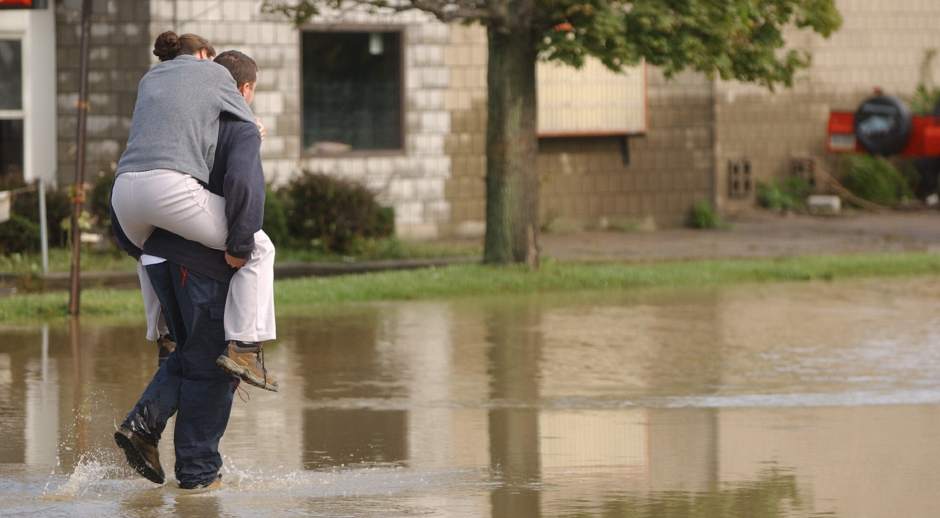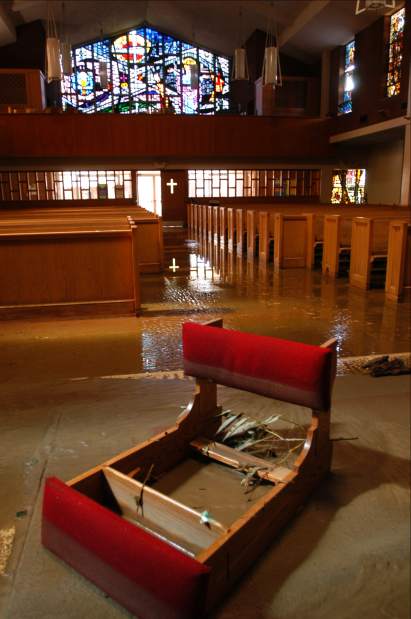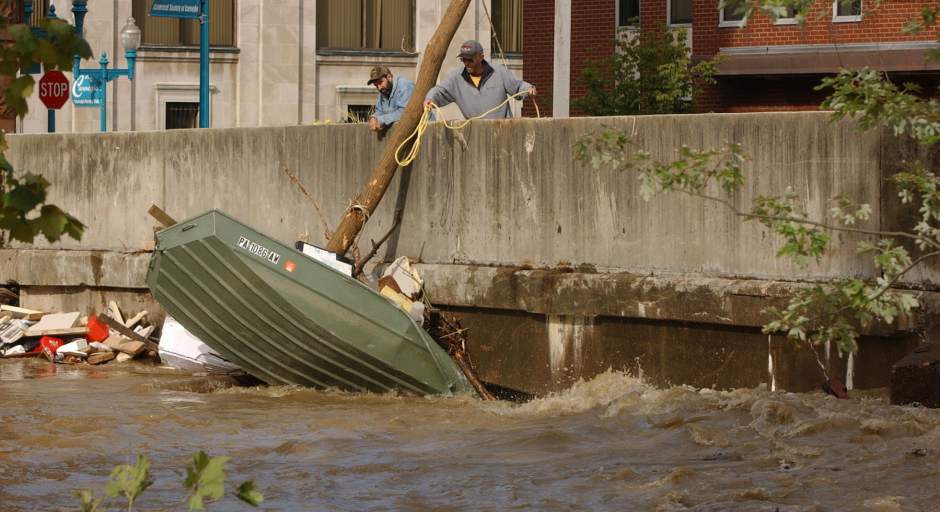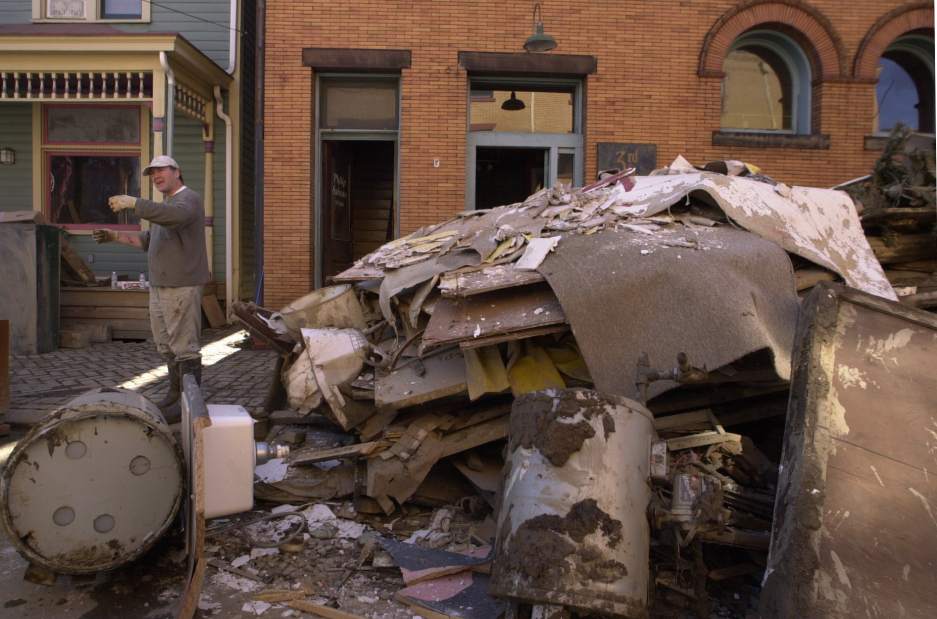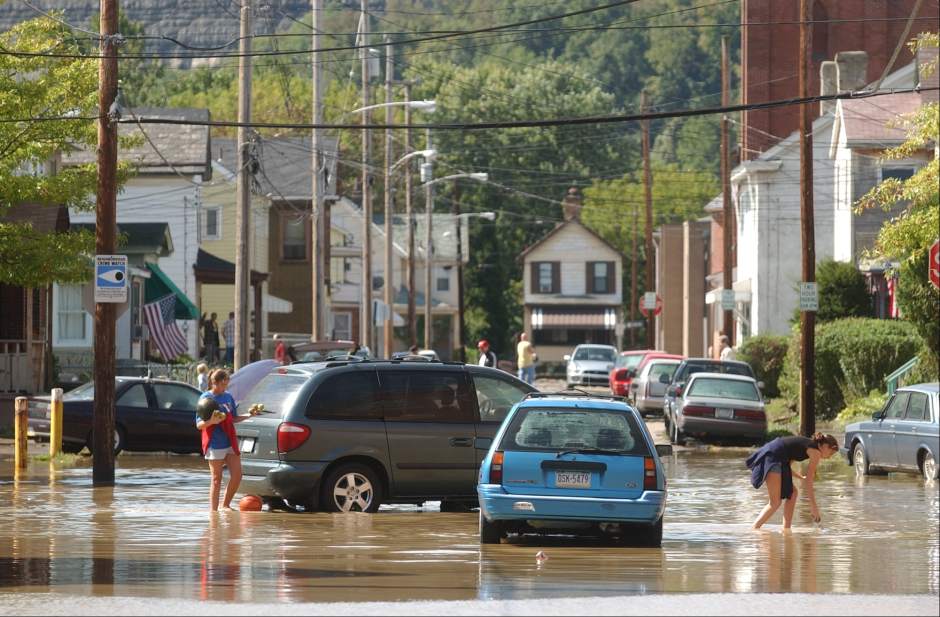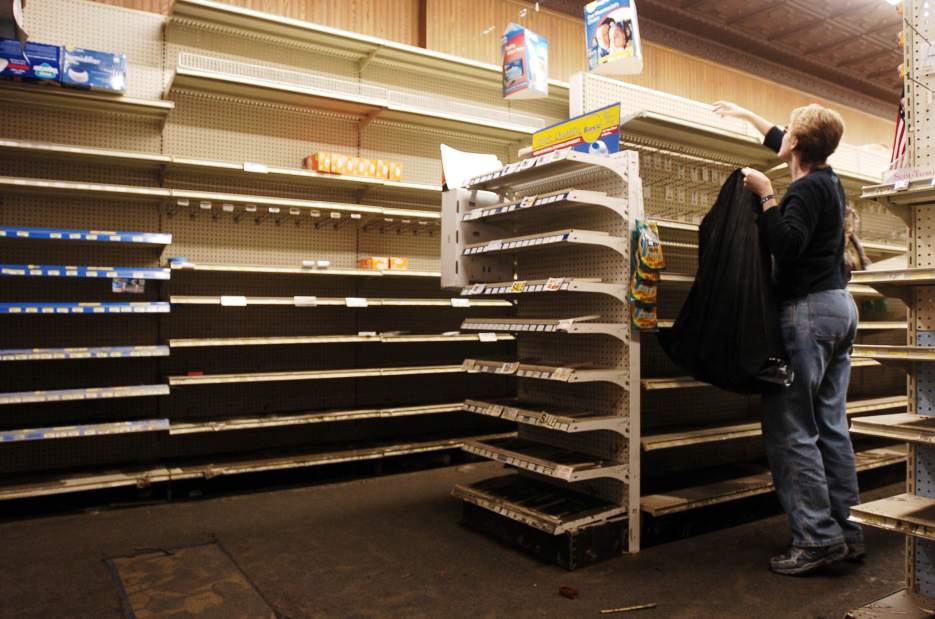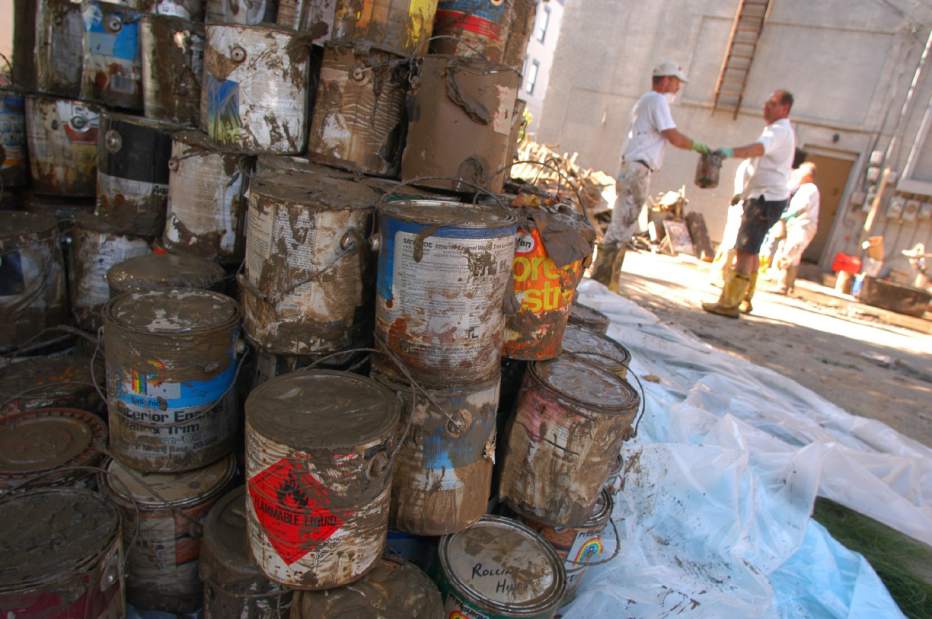Carnegie reflects on 10th anniversary of notorious rainy day
Remnants of Hurricane Ivan dumped nearly six inches of rain on Carnegie and surrounding communities on Sept. 17, 2004.
Chartiers Creek overflowed, flooding the business district and nearby residential streets. Dennis Santiago, 35, of Carnegie, died after losing his grip on a tree limb, and being swept away. Shops, offices and homes took on waist-high water, causing millions of dollars in damage.
“In some ways, it feels like it happened a million years ago,” said Jeff Harbin, then the borough's police chief, now retired and living in North Carolina. “Some days, it feels like it happened yesterday.”
Many of those who lived or worked in Carnegie remember the long night that followed a typical muggy, rainy September day.
“We were getting the aftermath of a hurricane. No big deal,” Harbin recalled thinking at the time.
Ed Krasousky, who lives on Lexington Court, near Campbells Run Road, watched the rain while he was at work a few miles away. He figured it would be the same as nine days earlier, when the remains of another storm, Hurricane Francis, dropped four inches of rain on the area.
“The creek was right at the top of the banks,” he said. “But it was OK.”
Then it wasn't.
His wife, Susan, was at home in the basement pumping out water that was seeping through drains and didn't notice water splashing past ground-level windows. Her son yelled to her to get out of the basement.
Soon afterward, she looked up and saw her husband running toward the house. Together, they moved Susan's car out of harm's way.
By now late afternoon, Harbin saw cars stopped on Mansfield Boulevard, because Chartiers Creek had risen over its banks.
He ushered more than a dozen drivers onto the Mansfield Bridge, which sits higher than the road. That proved to be a mistake.
Chartiers Creek continued to swell, trapping Harbin and the residents with less and less ground. The water rose as they waited by hour.
Councilman Pat Catena sat at his Beechwood Boulevard home, listening to the police scanner.
“I could hear Harbin yelling on the scanner, ‘We need a helicopter, we need to get people out of here,'” he recalled.
But helicopters weren't authorized to fly in severe weather conditions. Two Carnegie police officers commandeered a boat that sunk when they reached the bridge and they were stranded too.
Three or four more boating attempts were made by the fire department and police with comandeered boats, but none succeeded in the ensuing hours.
On the bridge, Harbin stood with another officer near his unmarked cruiser when a nearby transformer went out. The bridge went dark.
“We both looked at each other,” Harbin said, “and we both said the words almost simultaneously: 'We're not going to die on this bridge.'”
Johnstown River Rescue finally plucked the 22 from the bridge three at a time – civilians first and then officers by rank. They took shelter in the former Holy Souls Church Harbin estimated it was close to 2 or 3 a.m. by then.
“Grateful, cold, wet, tired, scared, hungry – it was a range of emotion,” Harbin said. “We had nothing to do but wait. And hope.”
Harbin called his wife, Louanne, who had followed his ordeal first via phone, then the television news and police scanner. She brought a change of clothes to the police station.
“After that, I went out, and the sun was coming up. It was the first actual view I had of my town. I just stood there,” he said.
He saw debris and mud covering streets that were impassable because of trees, limbs, cars and other items picked up and put down by the flood.
Across town, residents surveyed the devastation.
“It was like a war zone,” Ed Krasousky said. “The streets were piled with garbage.”
On Main Street, Papa J's owner Michael Troiani distributed food. Carnegie Park became a lot for disabled vehicles. The City of Pittsburgh brought in bulldozers. Officers from surrounding municipalities loaned cruisers.
And people cleaned with brooms and bleach.
“Clean, clean, clean, clean. It was awful,” said artist Phil Salvato, whose 3rd Street Gallery was inundated with four feet of water.
Office furniture, paper and ripped-out carpet were piled high outside businesses and homes. The historical society lost records.
“Everything from inside people's houses was on the outside,” Susan Krasousky said.
Jack Kobistek remembers the devastation. “When everybody cleaned out their homes, you looked down the street and just saw piles and piles of what was once people's homes,” said Kobistek, then a resident and now the mayor.
“It was very hard to witness all that – all the memories and important things people had in their homes just piled up on the sidewalk waiting to be picked up by the trash.”
Megan Guza is a staff writer for Trib Total Media. She can be reached at 412-388-5810 or mguza@tribweb.com.

